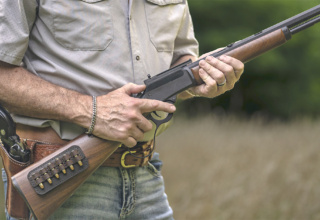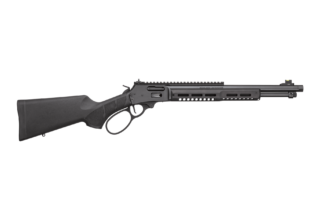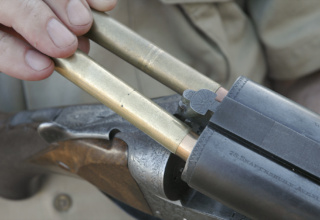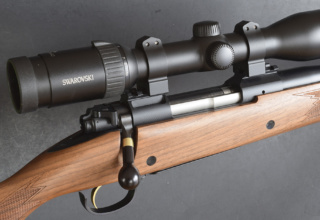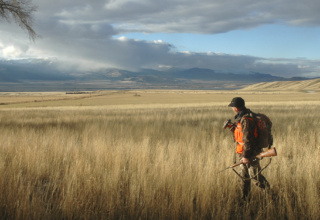It wasn’t the most powerful or the most accurate; but a million shooters bought it before WW II
by Wayne van Zwoll
Would you spend $666,731 on a lever-action rifle? That’s how much, in today’s dollars, Thomas Gray Bennett agreed to pay John Moses Browning in 1890 for a smaller version of a rifle Browning had already delivered.
No rifle has a better story to tell. I’ll distill it here:
By 1880, buffalo hunters feeding rail crews and Army posts had all but wiped the plains clean of the great herds. Keen to deprive hostile tribes of their subsistence, the government had approved. The day of the “buffalo rifle” — long, heavy 1874 Sharps and Remington Rolling Block single-shots — was fading.
But in 1873, the Army had abandoned muzzle-loading infantry rifles for the Trapdoor Springfield breech-loader. That year, Winchester trotted out another lever-action repeater to follow the popular Henry rifle of 1860 and its successor, the company’s own Model 1866. The Model 1873 fired the .44 W.C.F., or .44-40, Winchester’s first centerfire cartridge. “For general hunting or Indian fighting,” wrote William F. “Buffalo Bill” Cody soon thereafter, “your improved [1873 is] the boss…”
But even after the large-frame Model 1876 joined its roster, Winchester had no repeater to fire the .45-70, which had almost immediately replaced the .50-70 in the Army’s Trapdoor Springfield.
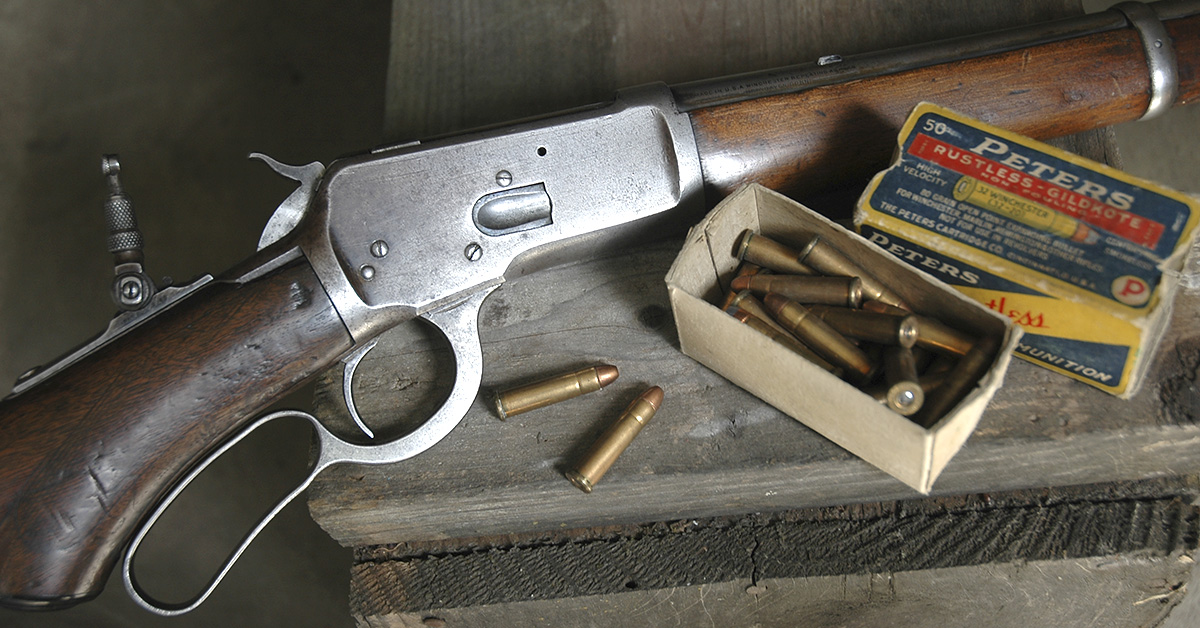
Early in 1883, Andrew McAusland, a traveling salesman for Winchester, came across a well-used single-shot rifle stamped “Browning Bros. Ogden, Utah, U.S.A.” Serial-numbered 463, it was chambered for the .45-70. A new competitor to chisel at Winchester’s market share? Astutely, he bought the rifle for $15 and shipped it to New Haven with a note.
Winchester V.P. (and Oliver Winchester’s son-in-law) T.G. Bennett knew nothing of a Browning Brothers shop; but MacAusland knew rifles. The train trip to “The Largest Arms Factory Between Omaha and the Pacific” took several days. Under a sign, “Guns, Pistols, Amunition and Fishing Tackle,” Bennett found a shop crew barely out of their teens. John was 28. Bennett got to the point: He wanted all rights to the rifle. What was the price? John’s spelling was flawed, but in business he was no fool. “Ten thousand.” A staggering sum. Bennett didn’t blink. He countered at $8,000 — $240,287 in purchasing power today.
That single-shot would appear in Winchester’s catalog as its Model 1885. (Later, Bennett had to remind the Brownings to stop using parts on hand to build and sell more rifles from Ogden.)

By 1884, after shelving two patents for repeating rifles, John Browning had a design that handled .45-70 loads and satisfied him. He and brother Matt brought the prototype, in twine-tied brown paper, to New Haven. In New York, they showed it to a salesman for sporting goods jobber Schoverling, Daly and Gales. His assessment, after handing the rifle back: “You are holding Winchester’s future.”
Bennett bought that repeater for “more money than there was in Ogden.” (The actual sum was not published but is thought to have been $50,000, or $1,547,770 in today’s dollars.) Winchester would sell it as its Model 1886, pairing the vertically sliding lock-up of the Model 1885 with a stout, smooth, reliable lever action. If you insisted the ’86 was the best rifle Winchester ever listed, even that it was the best lever rifle ever built, I wouldn’t argue. On the other hand, its progeny sold better and out-lived it at market.
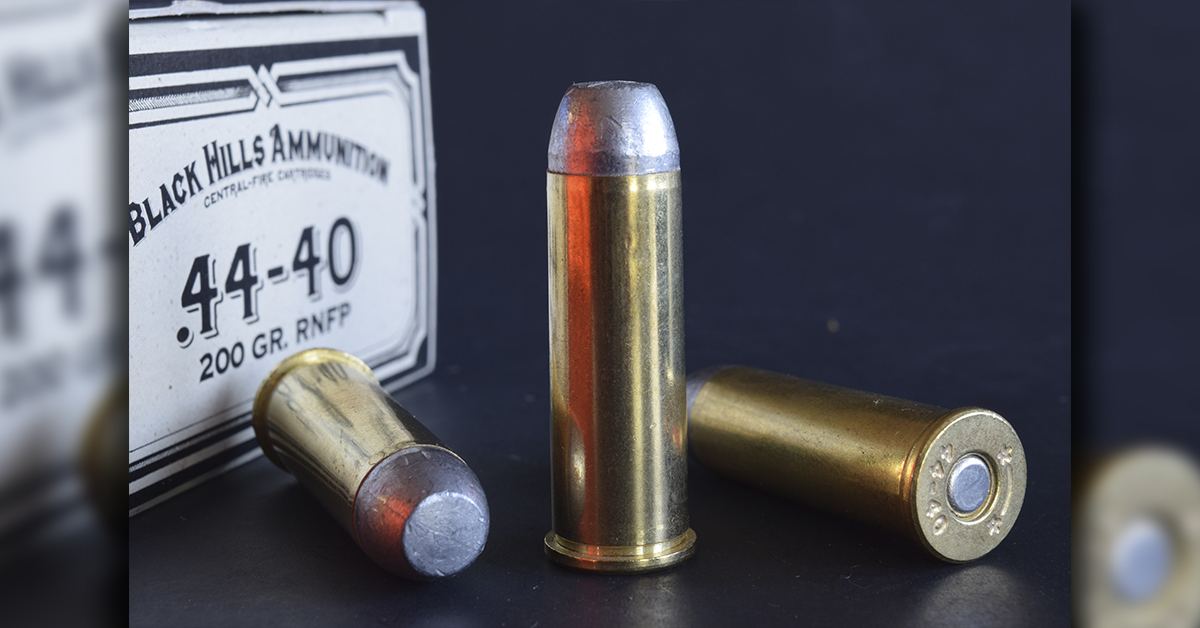
Between 1883 and 1900, John Browning would pitch 44 firearms designs to Thomas Bennett, who would become Winchester’s president. He bought them all, whether or not production would follow, just to keep them from the competition.
In 1890, on one of John’s factory visits, Bennett suggested a short-action rifle patterned on the ’86 — one to chamber the .44-40 that made Winchester’s 1873 a hit, and the .38-40 and .32-20, announced for it later. The ’73 was aging. Bennett wanted a replacement right away. He offered John $10,000 if he could build a prototype in three months, $15,000 if he delivered in two. Matt Browning recorded John’s reply. Paraphrased: “It’s a five- or six-day trip to and from Ogden – so twelve days for me to get home and for the rifle to reach you by express. You’ll have the rifle in thirty days for twenty thousand. Or it’s free.”
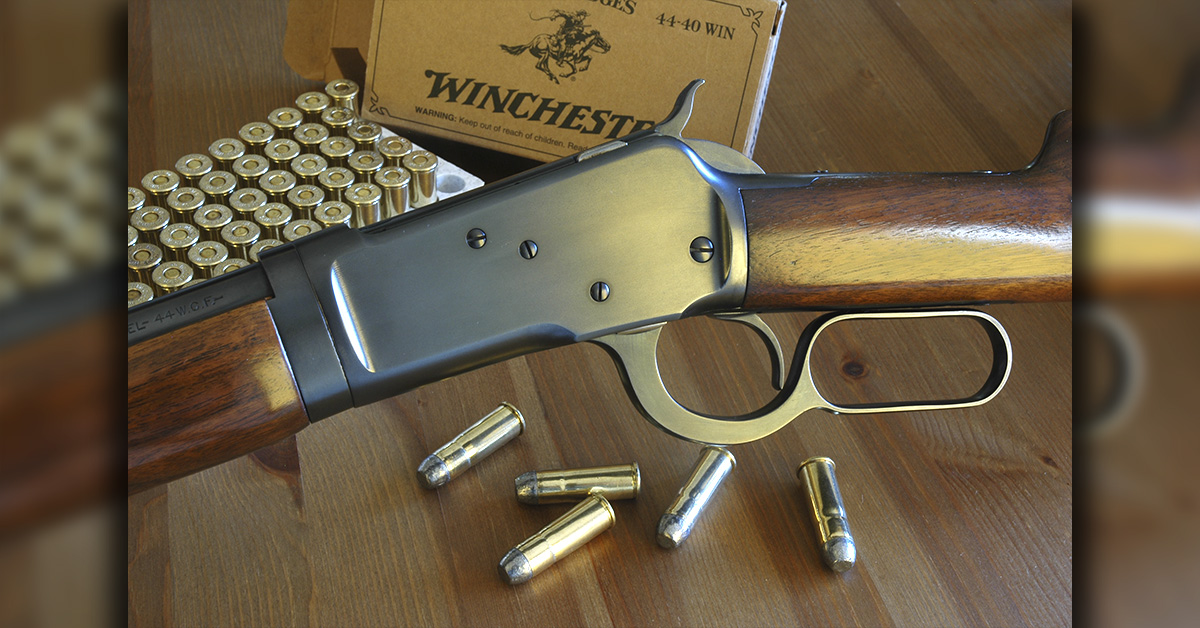
He beat his own deadline. These days, despite CAD drawings and computer-driven tools to speed parts production, a two-week window for designing and building a functioning rifle would be laughable. Indeed, a two-year timeline isn’t uncommon now. Browning’s genius defied logic!
In 1890, $20,000 was the equivalent of $666,731 today.
The rifle that would become Winchester’s Model 1892 was chambered in .44-40, .38-40, .32-20 and .25-20, a cartridge fielded about the same time as, if not for, the ’92. The Rifle had a 24-inch round or octagon barrel, a forend cap, and a crescent butt-plate. The Deluxe Rifle had a figured, checkered pistol-grip stock. Winchester listed an Antique sub-model for six years. Takedown versions were also available. Muskets with 30-inch barrels are rare — so, too, 1892 Short Rifles with barrels of 12 to 16 inches.

Winchester built Model 1892 Carbines with 20-inch round barrels, two barrel bands, and a saddle ring, besides the S-shaped Carbine butt-plate. Trapper sub-models wore barrels of 12, 14, 15, 16, and 18 inches. Carbines sold well abroad; many were shipped to Australia and South America.
Priced initially at $18, Winchester’s ’92 sold to the walls. The company would list it until 1941. With Models 53 and 65 variants in 1924 and 1933, more than 1,034,000 Model 1892s would ship, world-wide. The .44-40 became its most popular chambering.
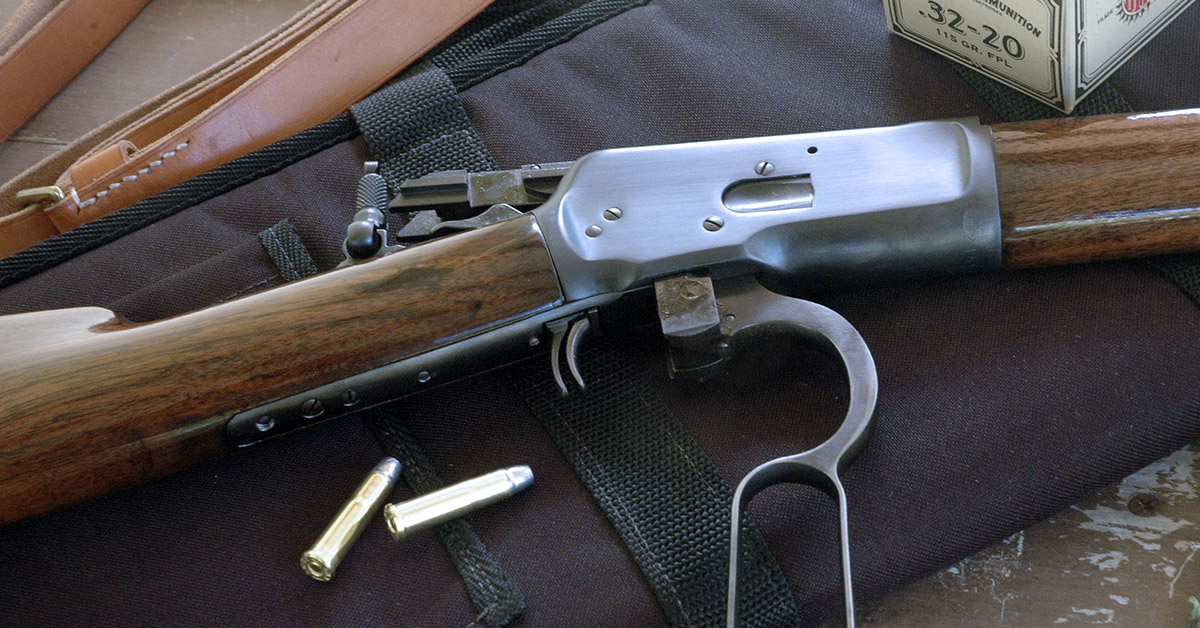
The ’92 was soon joined on Winchester’s roster by the Browning-designed 1894, first to chamber smokeless cartridges (.25-35, .30-30, .32 Special). It differed from the ’92 in lock-up, but shared its slim, scabbard-friendly profile and handled as nimbly in cover. Its bottle-neck cartridges matched the .44-40 ballistically up close, but their bullets flew flatter. The .44-40’s longevity in the face of such competition speaks volumes about its effectiveness afield in those long-ago days of iron sights.
The 1892 is hardly dead. It has been reproduced by Italian gunmakers, whose work matches that of Winchester’s 19th-century shop. Doug Turnbull’s restoration of Winchester lever-actions is nowhere more eye-catching than on the Model 1892 and has spurred orders for custom finishing of current 1892s produced for Winchester by Miroku of Japan.
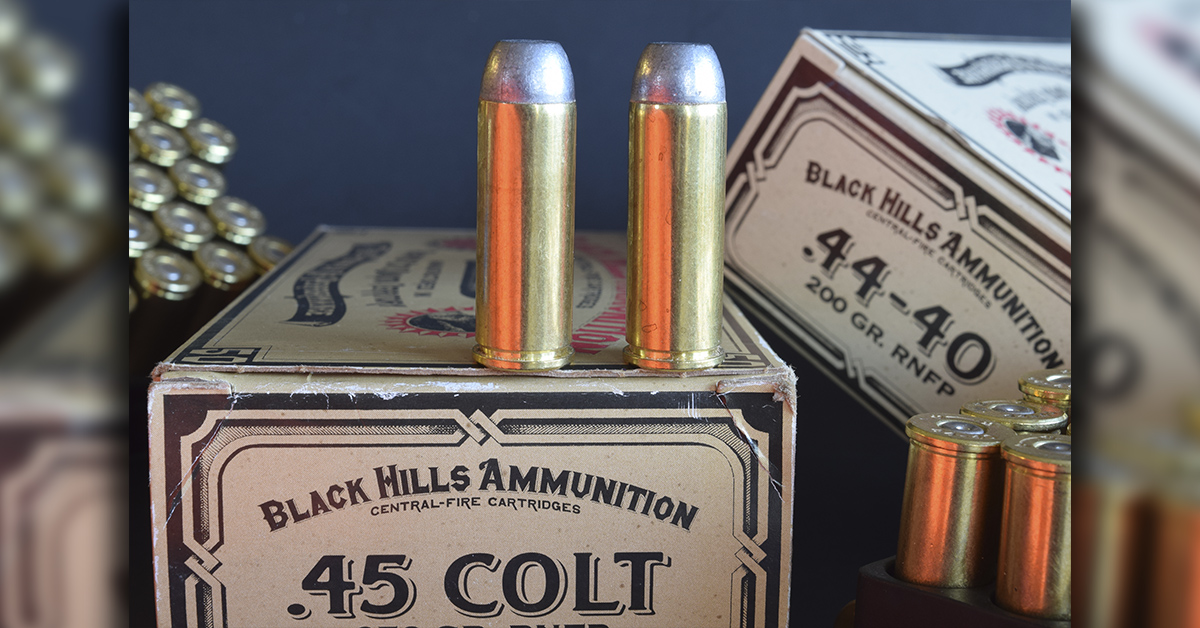
My friend Royal Stukey is also a lever-action buff. His first .44-40, a Navy Arms re-imagining of the Henry rifle, hooked him on the cartridge.
“It shot well with Remington and Winchester factory loads. Those half-jacket 200-grain bullets hit hard, too, killing deer and pronghorns right away without damaging much meat. A bullet angling from rib to off shoulder would break it and stay inside. The fired cases, though, didn’t fare well in my loading press. About one in five split. Fortunately, factory ammo in those days wasn’t terribly expensive.”
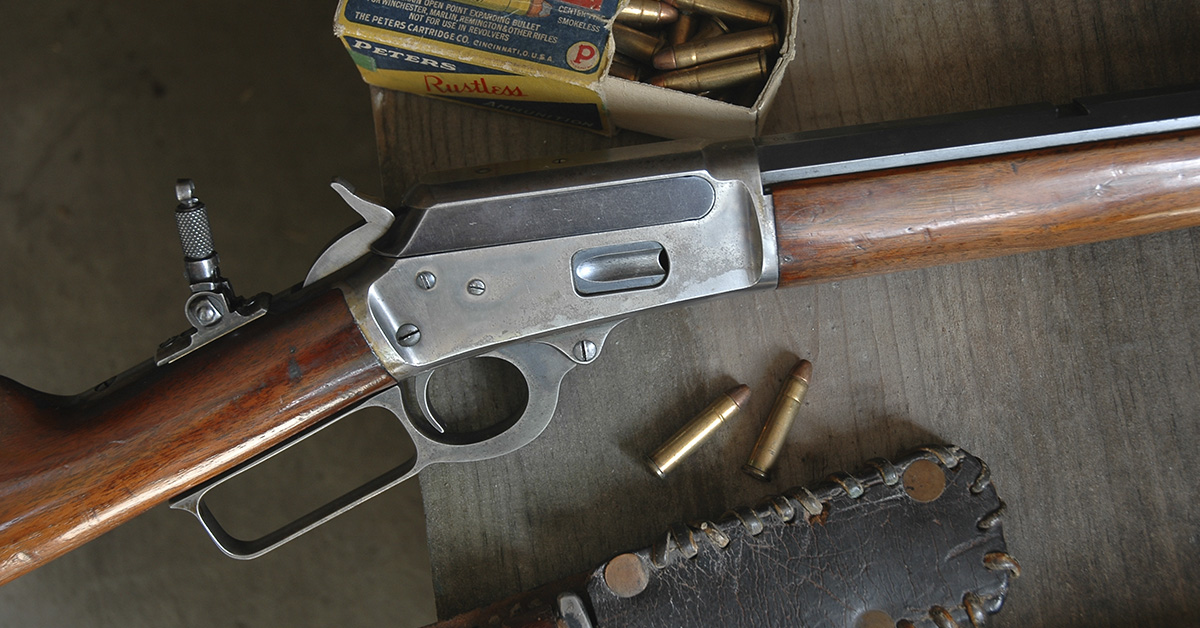
Handloading is now an extension of Stukey’s job. Building shooting benches and adjustable rests for customers obsessive about accuracy, he also likes carbon fiber stocks and sends long, thin bullets from chassis-cradled carbon-fiber barrels. No matter they have the personality of bricks.
Of course, he’s also hand-loading for his recent prize, a lovely Turnbull-tweaked Winchester ’92. RCBS dies and Starline brass were on their way as Royal, a stickler for detail, slugged the barrel. To his surprise, diameter came in a tenth (ten-thousandth) shy of .4300. “What you’d expect from a .44 Special or .44 Magnum bore,” he said. “It was mighty generous for the .427 bullets standard for the .44-40!”
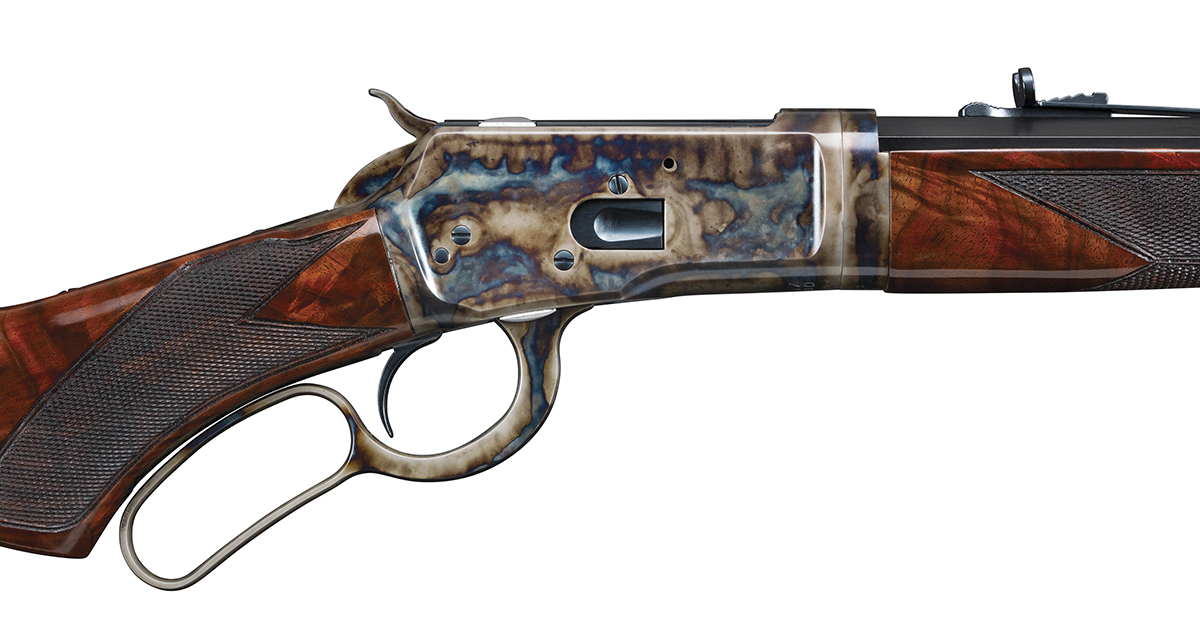
The logical conclusion: Miroku uses the same barrels (not the same chambers!) for its .44-40 and .44 Magnum rifles.
A bore of .429 or .430 groove diameter can spin .427 and .428 lead bullets; however, they don’t seal gas. Skidding, and escaping gas that melts the bullet surface deposit lead and impair accuracy. Royal ordered .431-diameter bullets from Oregon Trail. Pressed into new cases, they bulged the brass slightly in front of the shoulder dimple but chambered easily and shot accurately.

The weeds got deeper as he tackled the minor issues of seating depth and stress on brass in sizing dies meant for .427 bullets. He’s pleased with the results: tight groups and slick, faultless function.
Clearly, handloaders are smart to slug bores of new Winchester .44-40 barrels; but savvy lever-action enthusiasts assure me bore diameters in vintage .44-40 rifles routinely stray from current standards. As Winchester’s ’73 and ’92, and Marlin’s 1894, were almost always used with factory loads at modest distances, talk of bullet diameters to the third decimal didn’t spark gunfights in saloons or trigger range wars. Popular with Cowboy Action shooters in both rifles and single-action revolvers, the .44-40 is now most commonly loaded to send 200-grain lead bullets loafing out the muzzle at 800 fps. Recoil-free fun.
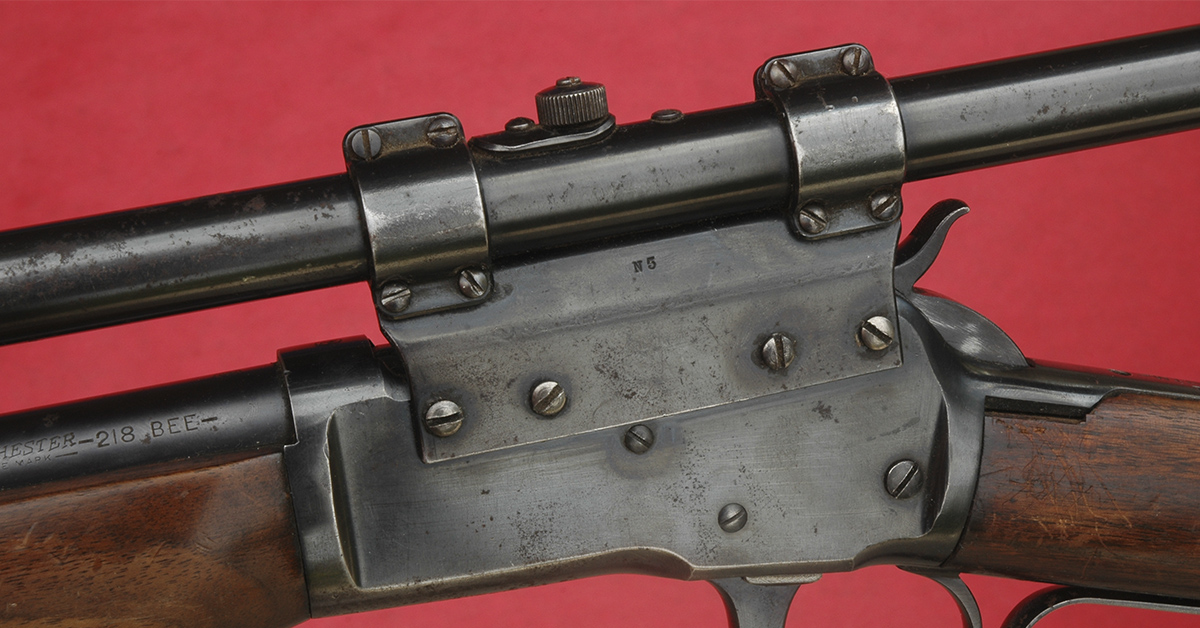
The Model of 1892 confirmed Winchester’s dominance in the era of black-powder cartridges. By the dawn of the 20th century, one of every four rifles sold stateside was a Winchester. Well into the age of bolt-actions and optical sights, the ’92 seduced rifle enthusiasts with its clean, slim profile and eager jump to cheek. Wand-like in hand, it seemed to point and cycle itself.
Best rifle? Winchester has yet to build better.



